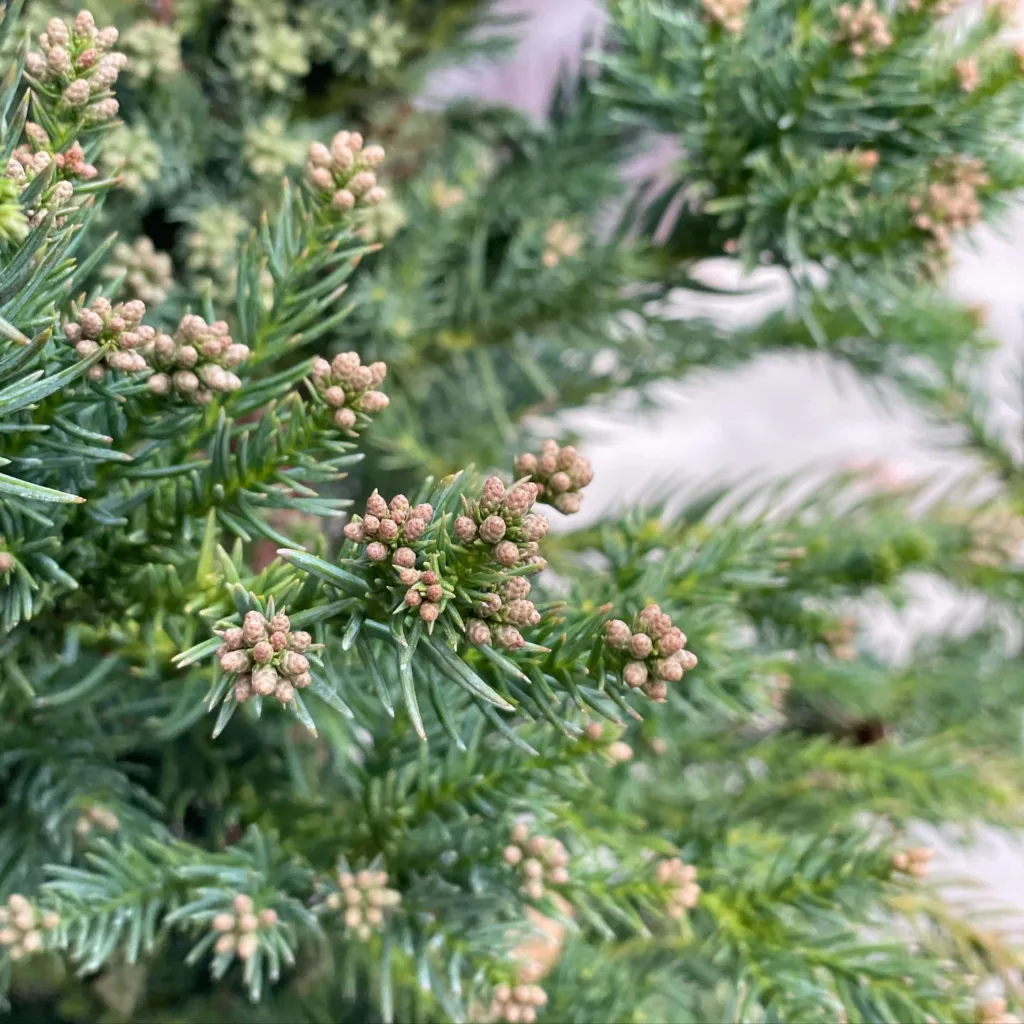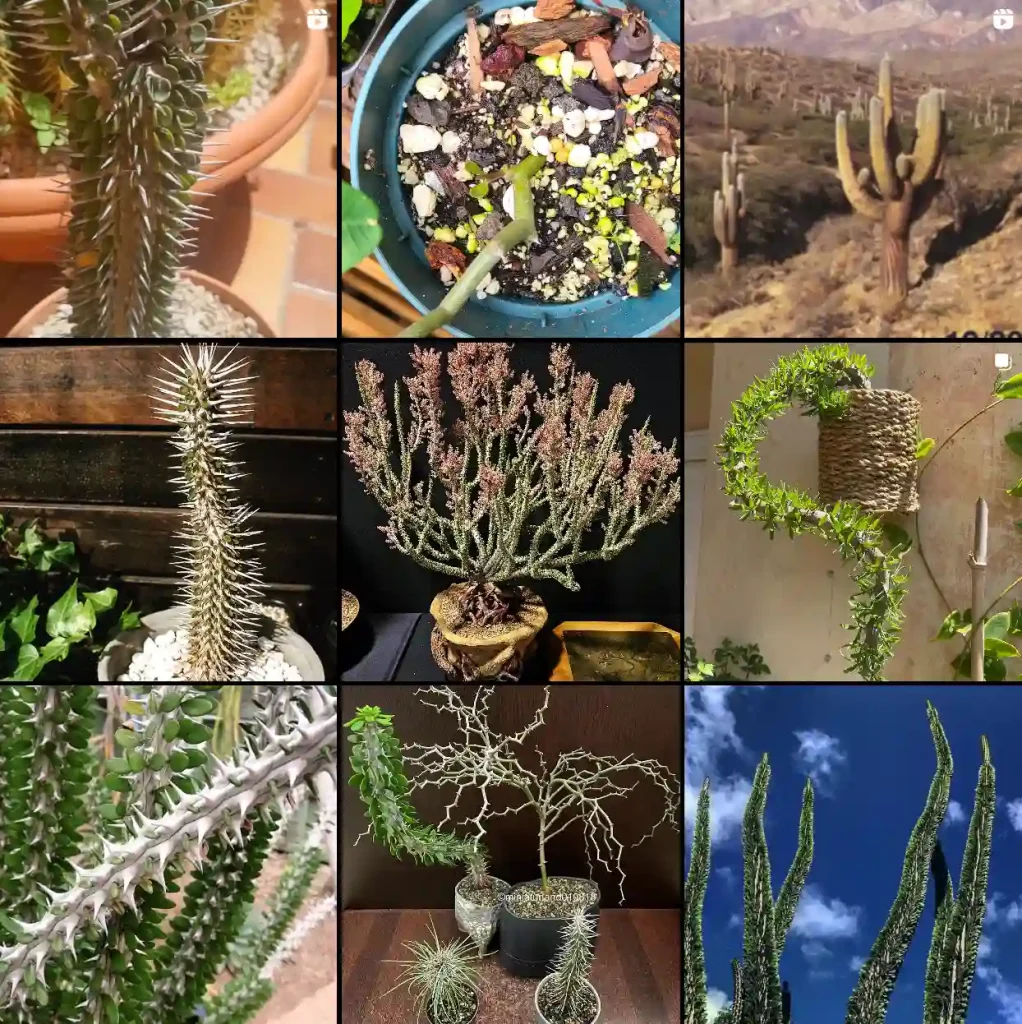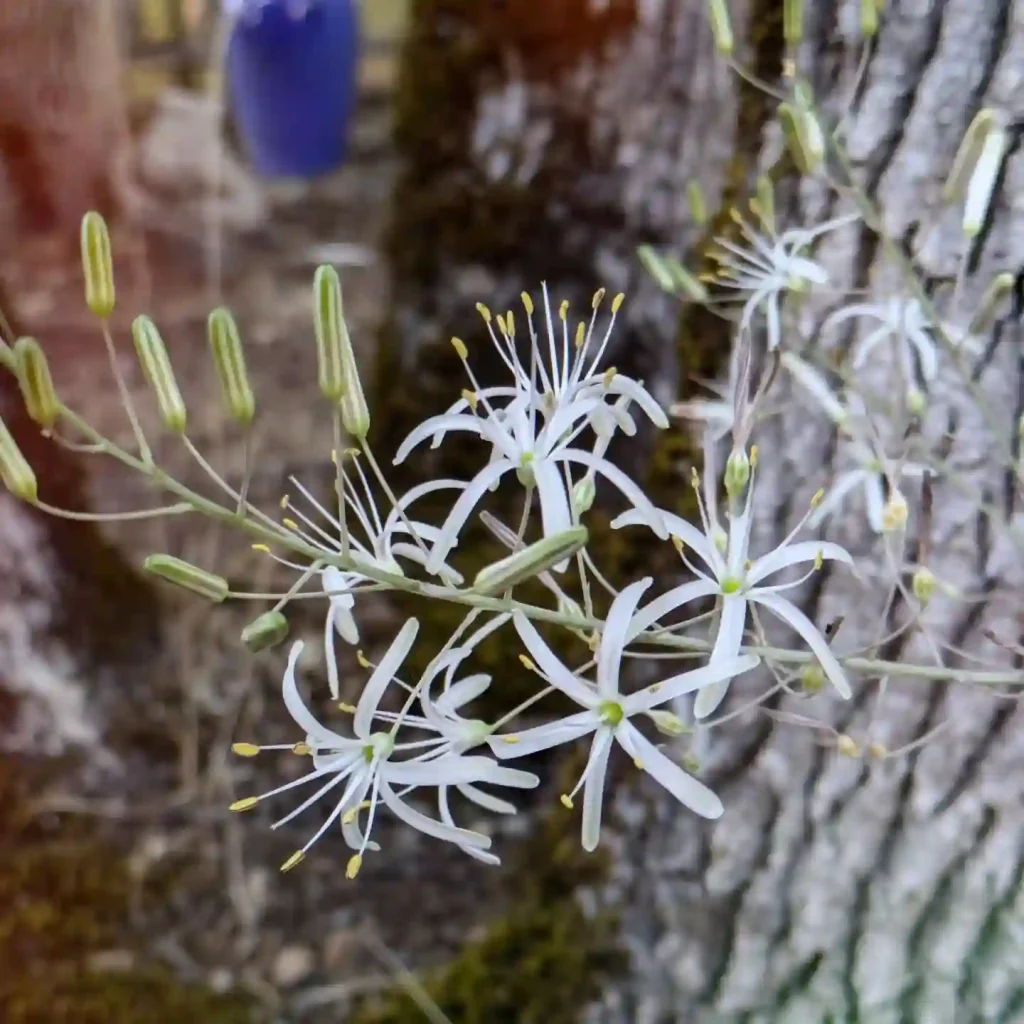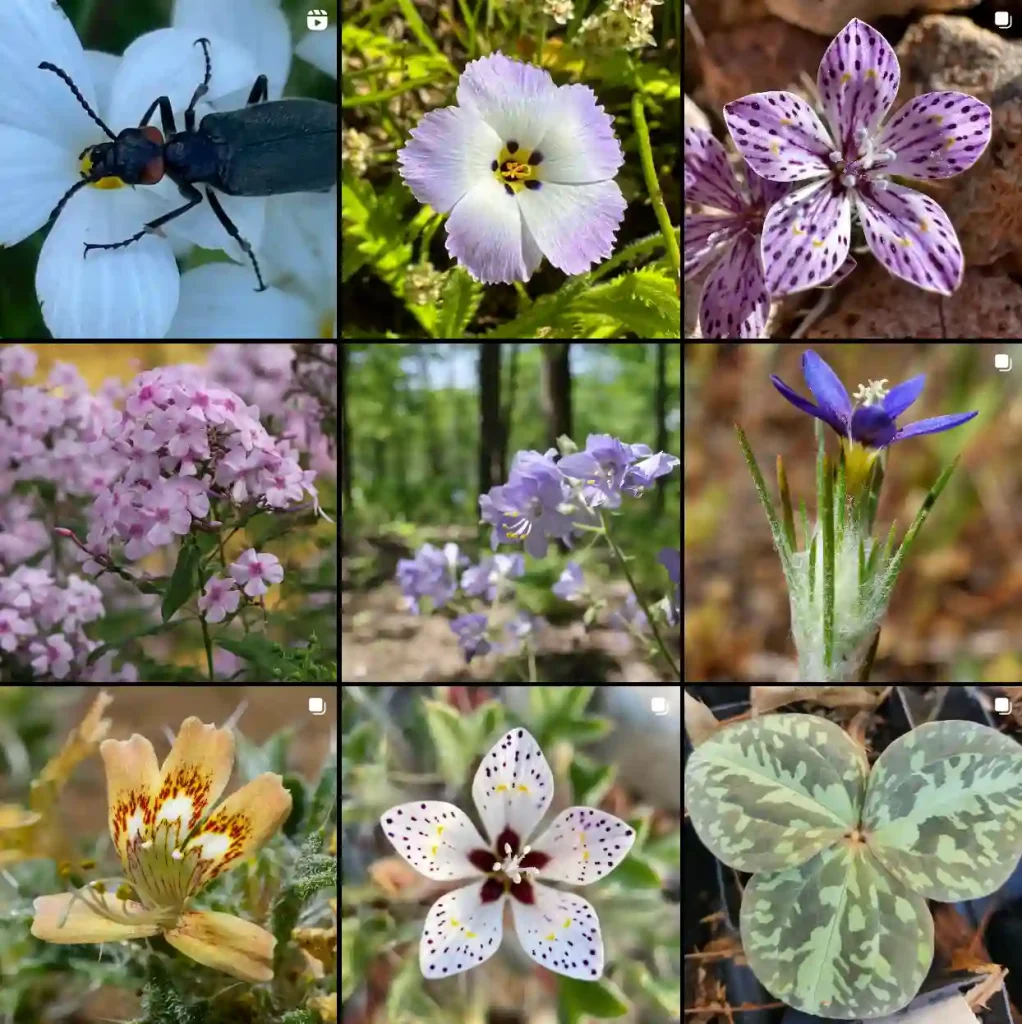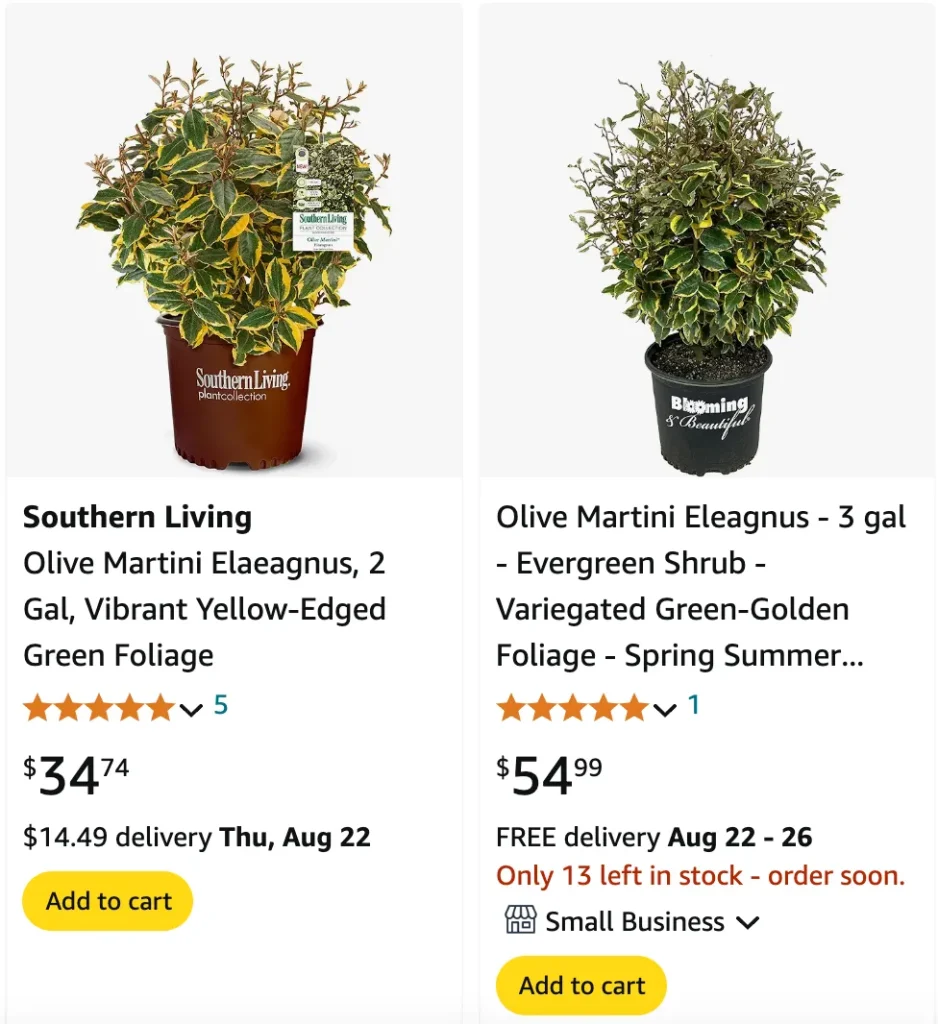
Frequently Asked Questions About Olive Martini Elaeagnus
I’ve always been intrigued by versatile plants that can thrive in a range of conditions, and Olive Martini Elaeagnus has definitely caught my attention. It’s one of those shrubs that not only stands out visually but also serves multiple purposes in the landscape. If you’re like me and curious about this unique plant, I’ve gathered some common questions and provided answers based on my experiences.
96 Species in Genus Elaeagnus
What is Olive Martini Elaeagnus?
Olive Martini Elaeagnus, scientifically known as Elaeagnus x Ebbingei ‘Gilt Edge’, is an evergreen shrub that’s often praised for its variegated foliage. The leaves are a striking mix of green and gold, with a silvery underside that adds to its visual appeal. This plant can reach up to 10 feet tall and wide, making it ideal for hedging, privacy screens, or as a focal point in the garden. What I find particularly appealing about Olive Martini Elaeagnus is how it adapts well to different environments, whether you’re planting it in full sun or partial shade.
How to Care for Olive Martini Elaeagnus?
Caring for Olive Martini Elaeagnus is quite straightforward. One of the reasons I love this plant is its resilience. It’s drought-tolerant once established and can thrive in various soil types, from sandy to clay. I usually water mine regularly during the first growing season to help establish a strong root system, but after that, it requires minimal attention.
For pruning, I typically shape mine in late winter or early spring to maintain its form. The plant responds well to trimming, so if you’re using it as a hedge, don’t hesitate to give it a good cut. Fertilizing isn’t always necessary, but if you want to boost growth, a balanced slow-release fertilizer applied in the spring works wonders.
How to Propagate Olive Martini Elaeagnus?
Propagating Olive Martini Elaeagnus is relatively simple, which makes it even more rewarding. I’ve had success with both seed and cuttings, though I prefer using semi-hardwood cuttings in late summer or early autumn. Here’s what I usually do:
- Select a healthy branch: Look for a semi-ripe stem, which means it’s partially matured but still flexible.
- Cut a 4-6 inch segment: Make sure to cut just below a leaf node.
- Remove the lower leaves: Leave a few at the top for photosynthesis, but strip the bottom half.
- Dip in rooting hormone: This step isn’t mandatory, but I’ve noticed it increases success rates.
- Plant in well-draining soil: Place the cutting in a mix of perlite and potting soil, then water lightly.
- Maintain humidity: I usually cover the cutting with a plastic bag to create a mini greenhouse effect.
In a few weeks, you should start seeing roots develop. Once the roots are well-established, you can transplant the cutting into your garden or a larger pot.
What to Plant with Olive Martini Elaeagnus?
One of the best things about Olive Martini Elaeagnus is how well it pairs with other plants. In my experience, it looks fantastic alongside contrasting textures and colors. For example, I’ve planted mine next to ornamental grasses like Miscanthus or Pampas Grass, which adds a nice contrast to the shrub’s bold leaves.
If you’re into a more tropical look, pairing it with Banana Plants or Canna Lilies can create a lush, exotic feel. For a more classic approach, I like to mix it with Boxwood or Holly for a structured, formal garden design.
How to Use Olive Martini Elaeagnus in Landscaping?
There are countless ways to incorporate Olive Martini Elaeagnus into your landscaping. Personally, I love using it as a natural privacy screen. Its dense foliage and height make it perfect for creating boundaries or screening off less desirable views. I’ve also used it as a windbreak, thanks to its sturdy nature.
Another great use is as a specimen plant. The variegated leaves catch the light beautifully, making it a standout in any garden bed. I often place mine in the center of a mixed border to draw attention.
Is Olive Martini Elaeagnus Toxic?
This is an important question, especially for those of us with pets or children. While Olive Martini Elaeagnus isn’t listed as highly toxic, it’s always a good idea to exercise caution. I personally haven’t had any issues with my pets nibbling on it, but I still try to keep them from chewing on any garden plants. If you’re concerned, consulting with your vet or a local extension office is a good idea.
How Does Olive Martini Elaeagnus Handle Pests and Diseases?
One of the reasons Olive Martini Elaeagnus is so low-maintenance is its resistance to most pests and diseases. In my experience, this plant rarely has issues with insects or fungal problems. However, I always keep an eye out for aphids or scale insects, which can occasionally become a problem. A simple spray with insecticidal soap usually does the trick.
Can Olive Martini Elaeagnus Tolerate Coastal Conditions?
Yes, Olive Martini Elaeagnus is quite tolerant of coastal conditions, which is one of the reasons I love it. The plant handles salt spray and wind better than many other shrubs, making it an excellent choice for seaside gardens. I’ve seen it thrive in areas where other plants struggle, so if you live near the coast, this could be a perfect addition to your landscape.
Conclusion
Olive Martini Elaeagnus is a versatile and attractive shrub that brings a lot to the table. Whether you’re looking for a low-maintenance hedge, a standout specimen plant, or something that can handle tough conditions, this plant fits the bill. From my experience, it’s an excellent addition to any garden, providing year-round interest and requiring minimal care.
If i die, water my plants!
